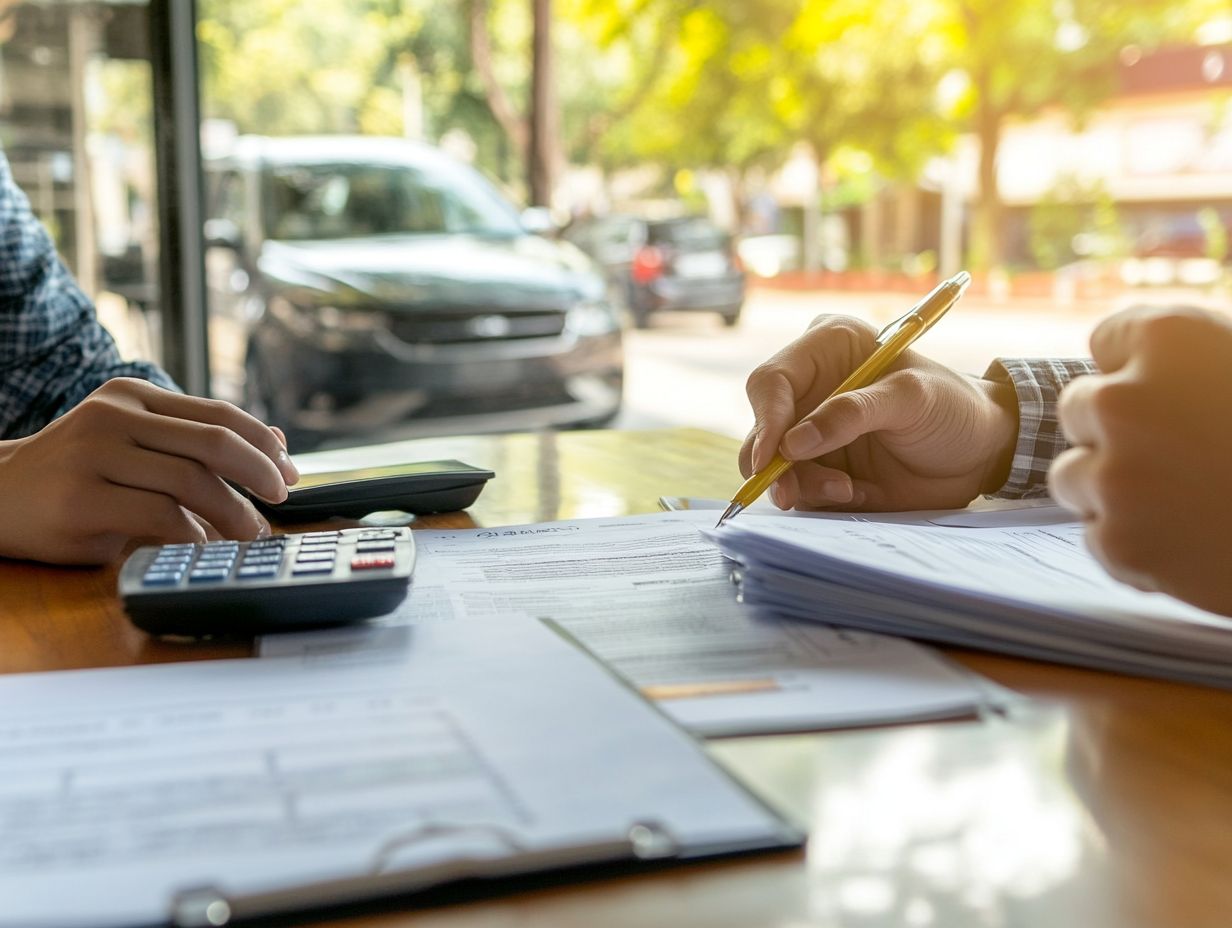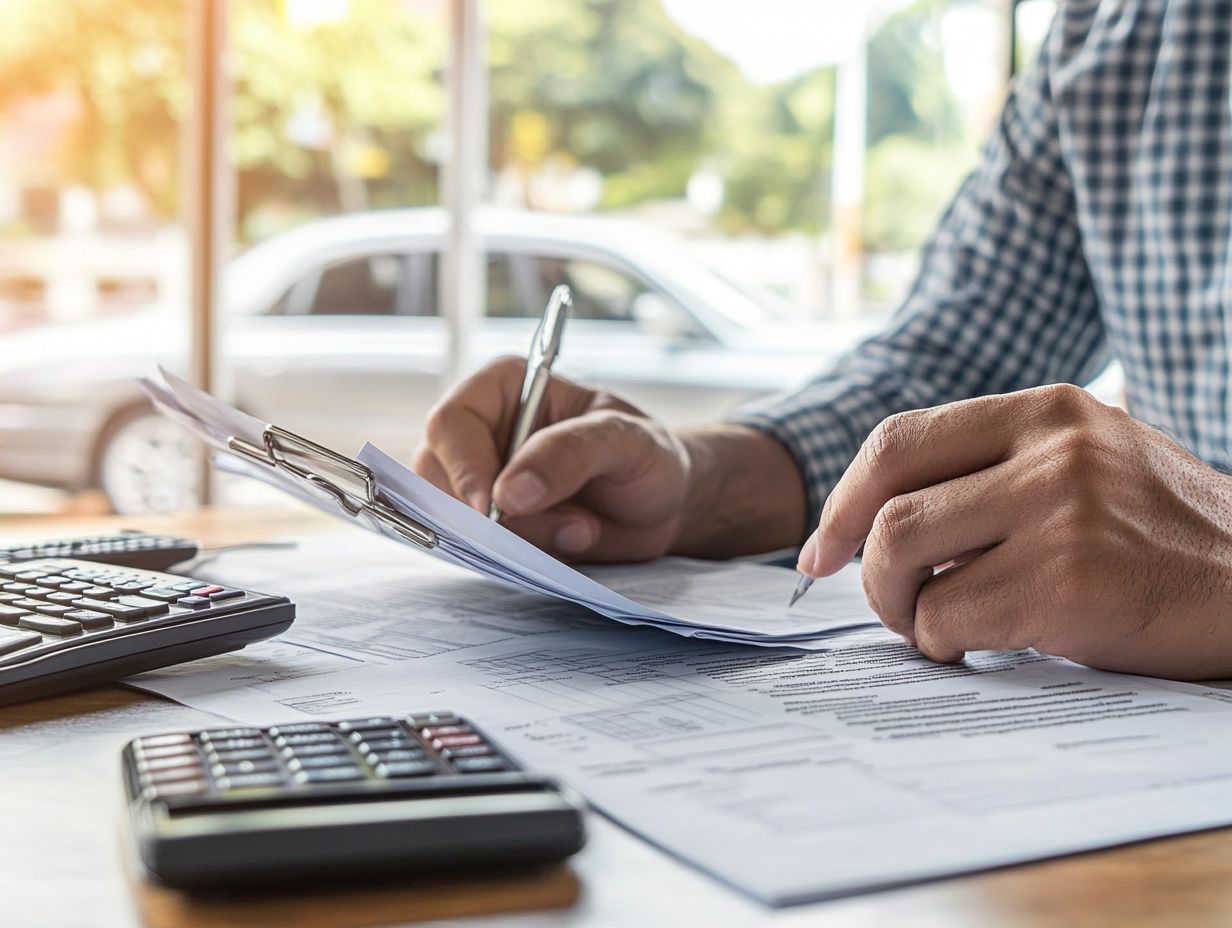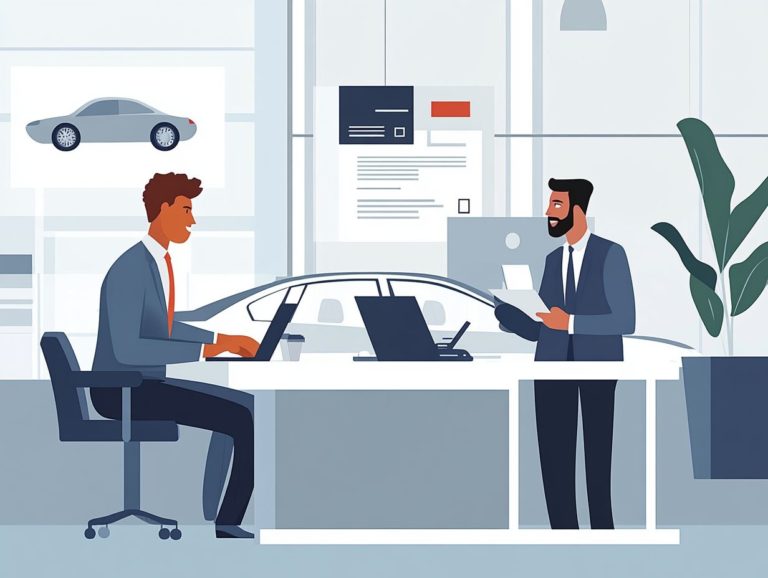How to Handle Post-Lease Issues with Your Car
When your car lease reaches its end, many questions and potential challenges may arise.
Understanding the details of post-lease issues is crucial for facilitating a seamless transition back to the leasing company. From common concerns like wear and tear to addressing damage and necessary repairs, this guide will explain the essential steps you need to take.
You ll learn what to expect when returning your vehicle and how to navigate potential fees. Get ready to tackle the end of your lease with confidence and enthusiasm!
Contents
- Key Takeaways:
- What You Need to Know About Post-Lease Issues
- Handling Damage and Repairs
- Returning Your Leased Vehicle
- Frequently Asked Questions
- 1. What should I do if I notice damages on my leased car after returning it?
- 2. How do I avoid excess wear and tear charges on my leased car?
- 3. Can I negotiate post-lease issues with my leasing company?
- 4. What happens if I exceed the mileage limit on my leased car?
- 5. Can I purchase my leased car if I am not satisfied with the issues after the lease ends?
- 6. What if my leased car has mechanical issues after I return it?
Key Takeaways:

- Be aware of the post-lease issues that can affect your vehicle.
- Know how to identify and address normal and excessive wear on your leased car.
- Understand how to report damage, negotiate repair costs, and prepare for vehicle inspection when returning your leased vehicle.
What You Need to Know About Post-Lease Issues
Understanding post-lease issues is essential for anyone who has leased a car, as various complications can arise when the lease term ends. Whether you’re dealing with mechanical problems, excessive wear, or issues with the lease agreement, knowing your rights and responsibilities can make the transition easier.
Familiarity with lemon laws and consumer protection regulations can help you address potential challenges more confidently. It’s vital to prepare for vehicle inspections and fully understand the lease agreement’s terms regarding the return of your leased vehicle.
Typical Post-Lease Challenges You Might Face
Post-lease issues include various challenges that can arise once you return a leased vehicle at the end of the lease term, affecting both you and the leasing company.
These challenges can range from mechanical defects that aren t immediately noticeable to potential issues with the vehicle s condition report, as well as misunderstandings about the terms of your lease agreement. You may find yourself navigating the wear-and-tear guidelines, which can lead to unexpected fees if the leasing company determines that your vehicle exceeded what is considered normal usage.
Documentation issues might also arise, such as missing paperwork that can lead to disputes over charges or obligations. It s essential to review your lease agreement thoroughly and address any ambiguities quickly to avoid costly repercussions.
Dealing with Wear and Tear
Managing the wear and tear on a leased vehicle can feel overwhelming, especially when distinguishing between normal wear and excessive damage that could incur additional charges. It s important to understand the repair responsibilities outlined in your lease agreement to maintain the vehicle’s value during the lease term.
While normal wear and tear is typically accepted, excessive damage can lead to disputes with your leasing company when it s time to return the vehicle. Understanding these nuances will enable you to manage your lease more effectively and avoid unnecessary costs.
Assessing Normal Wear and Tear

Assessing normal wear and tear on your leased vehicle requires understanding the acceptable standards outlined in your lease agreement and recognizing the vehicle’s condition when it’s returned.
Familiarize yourself with these specified criteria, as they can vary significantly between leasing companies. For example, minor scratches, small dents, and typical interior wear from daily use like slight fabric fraying are often viewed as normal.
However, larger issues such as significant dents, deep scratches, or persistent interior stains can lead to additional charges. By carefully reviewing the lease terms, you can navigate potential disputes and ensure a smoother return process, minimizing unexpected costs and fostering a positive relationship with your leasing company.
Addressing Excessive Wear and Tear
Addressing excessive wear and tear on your leased vehicle requires a careful check of repair costs and understanding how this affects your lease agreement upon return.
This process involves identifying issues such as scratches, dents, tire wear, and interior damage that exceed normal usage. The first step is to thoroughly document any noticeable damage. Clear photographs and a detailed record of communications are essential for advocating your position.
When talking with the dealership, maintain open lines of communication. Ensure that both parties understand the lease terms and potential charges for excessive wear and tear. Following these steps can lead to a smoother resolution and may help mitigate unexpected costs.
Handling Damage and Repairs
Handling damage and repairs on a leased vehicle can be daunting. You must navigate the responsibilities outlined in your lease contract effectively.
Whether the damage arises from typical wear and tear or an unexpected incident, knowing how to report the damage and understand the potential ramifications of repair defects can help you avoid financial burdens. Consulting a financial expert can provide valuable insights on managing repair costs.
Reporting Damage to the Leasing Company
Reporting damage to the leasing company is a crucial step to ensure that issues are addressed quickly and in line with your lease agreement.
As soon as you spot damage, notify the leasing management right away. Timely reporting can prevent further deterioration and potential liability. Document the damage meticulously, capturing clear photographs and providing detailed descriptions while noting the date of the incident. Follow the timelines in your lease to avoid issues.
Keeping a record of all communications, including emails and phone calls, will streamline the repair process. By following these steps, you fulfill your responsibilities and pave the way for a smoother resolution.
Negotiating Repair Costs
Negotiating repair costs after damage to a leased vehicle can be a complex task, requiring a solid understanding of your lease agreement and potential financial ramifications.
To negotiate successfully, come prepared with all relevant documentation, including the original lease agreement, service records, and photographs of the damage. Research typical repair costs for similar damages before discussing with the leasing company or dealership.
Approach the conversation calmly and focus on facts. Clearly express your concerns while referencing your contractual rights. A well-defined strategy will significantly enhance your chances of achieving a satisfactory resolution.
Returning Your Leased Vehicle

Returning your leased vehicle entails several essential steps. Begin by preparing for the vehicle inspection and ensure you understand the terms of your lease agreement.
Don t let unexpected fees catch you off guard know what to expect! Being aware of any potential end-of-lease fees that might arise based on your vehicle s condition upon return is crucial. Familiarizing yourself with what to expect during the inspection will facilitate a smooth return process and help you minimize unexpected costs.
Preparing for Vehicle Inspection
Preparing for a vehicle inspection is a crucial step in returning your leased vehicle. It allows you to review the condition of your car and ensure it meets the lease agreement’s standards for wear and tear.
Before the inspection, take the time to conduct a thorough assessment of both the exterior and interior. Begin by checking the body for scratches, dents, or signs of rust, as these can lead to additional charges.
Pay attention to the tire tread depth and ensure they re properly inflated; after all, tires are key to your vehicle’s overall safety and compliance.
Act quickly to document every detail in a checklist format, including photos of any imperfections. This can serve as valuable evidence should any disputes arise.
By being meticulous in your preparations and addressing minor issues ahead of time, you can ensure a smoother inspection process and steer clear of unexpected fees.
Understanding End-of-Lease Fees
Understanding end-of-lease fees is essential for you as a lessee, as these charges can fluctuate based on the vehicle’s condition at the time of return and the specifics outlined in your lease agreement.
Typically, these fees fall into several categories, including extra damage fees, mileage overages, and disposition fees, which can significantly affect the total cost when returning the vehicle. For example, damage fees arise from damages that exceed normal use, while mileage overages occur when your mileage surpasses the limit specified in your contract.
To keep these expenses in check, take good care of your vehicle and consider purchasing it at the end of the lease term. Consulting a financial advisor can provide valuable insights into understanding these charges, enabling you to make informed decisions that align with your financial goals.
Frequently Asked Questions
1. What should I do if I notice damages on my leased car after returning it?
If you notice any damages on your leased car after returning it, contact your leasing company immediately. Take pictures of the damages and provide them with a detailed description. They will assess the damages and determine if they are covered under your lease agreement.
2. How do I avoid excess wear and tear charges on my leased car?

To avoid extra damage fees on your leased car, take good care of the vehicle during the lease period. Follow the recommended maintenance schedule and keep up with regular cleanings. Be mindful of any potential damages and address them promptly before returning the car.
3. Can I negotiate post-lease issues with my leasing company?
Yes, you can negotiate post-lease issues with your leasing company. If you believe you are being charged unfairly for damages or wear and tear, provide evidence and try to reach a mutually agreeable resolution. Keep in mind that the terms of your lease agreement will ultimately determine your responsibility for any post-lease issues.
4. What happens if I exceed the mileage limit on my leased car?
If you exceed the mileage limit on your leased car, you will be responsible for paying excess mileage charges. These charges can vary depending on your leasing company, but they are typically charged per mile. It’s important to monitor your mileage throughout the lease period and try to stay within the allotted limit.
Start preparing today to make your lease return smooth and hassle-free!
5. Can I purchase my leased car if I am not satisfied with the issues after the lease ends?
Yes, you can buy your leased car at the end of the lease term if you’re unhappy with the problems after the lease ends.
However, remember that you are still responsible for any damages or wear and tear on the vehicle. It’s crucial to inspect the car thoroughly and negotiate with the leasing company before deciding to purchase.
6. What if my leased car has mechanical issues after I return it?
If your leased car has mechanical issues after you return it, review your lease agreement carefully.
Some leasing companies may offer a warranty or maintenance plan that covers mechanical issues even after the lease term.
If there’s no coverage, you may need to contact a mechanic or your insurance company for help.






